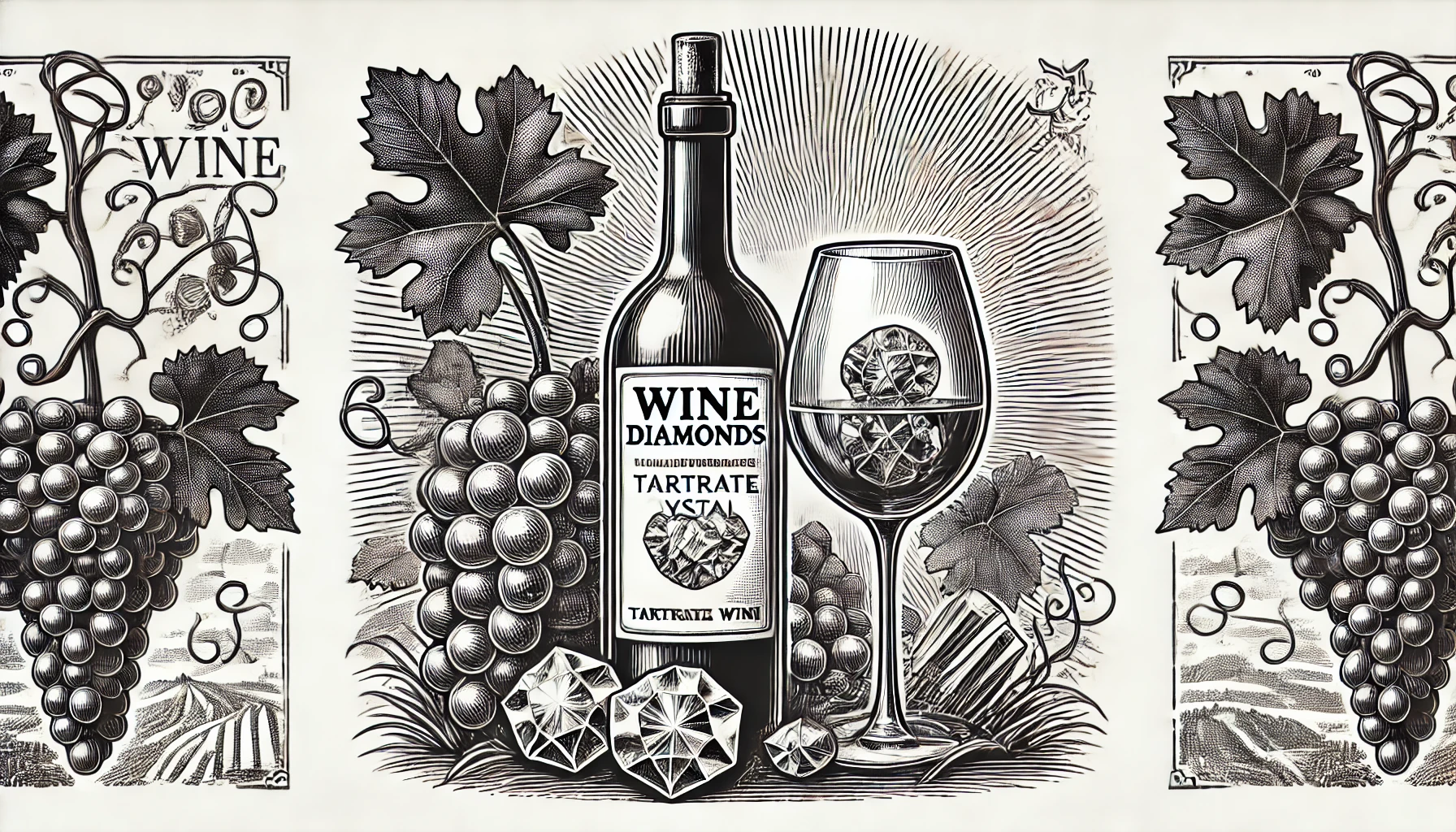
Wine Diamonds, also known as tartrate crystals, are natural crystalline deposits that sometimes form in wine bottles. These crystals are made from tartaric acid, a compound found naturally in grapes. They are especially common in white and sparkling wines. When wine is exposed to cold temperatures, tartaric acid binds with potassium, forming potassium bitartrate, which crystallizes as wine diamonds.
The presence of wine diamonds does not mean the wine is flawed or low quality. In fact, these crystals often occur in wines that undergo minimal processing or cold stabilization. Cold stabilization is a winemaking technique that chills the wine before bottling, causing the crystals to form in the tank rather than the bottle. However, in wines that avoid this step, the crystals may settle at the bottom or cling to the cork. Sometimes they are catching drinkers by surprise.
Wine diamonds do not alter the taste or quality of the wine. They are tasteless, safe to consume, and can be removed by decanting or simply pouring carefully. Some wine lovers even see them as a mark of authenticity, as they indicate a wine made with fewer additives or stabilizing processes. For those who prefer a clear wine, chilling the bottle for a few hours will help the crystals settle to the bottom.
The phenomenon of wine diamonds reflects the natural qualities of the winemaking process. Also, they highlights the role of tartaric acid in the structure and stability of wine. They are a charming reminder of the complex chemistry that makes every bottle unique.
Curious about more wine terms and insights? Visit our Wine Wiki section and explore the basic wine terms for expert definitions and tips!